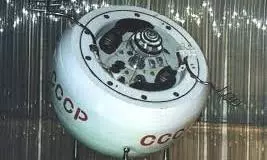
Soviet Venus probe Cosmos 482 may reenter Earth's atmosphere after 52 years in orbit
text_fieldsA spacecraft launched over half a century ago by the Soviet Union is expected to make a dramatic return to Earth.
Cosmos 482, a Venus lander that failed to complete its interplanetary mission in 1972, has remained trapped in Earth's orbit for the past 52 years.
Now, experts predict that the probe could reenter Earth’s atmosphere between May 8 and May 14, with May 11 being the most likely date.
The spacecraft was launched on March 31, 1972, as part of the Soviet Venera program, which aimed to explore Venus. While its sister probe, Venera 8, successfully landed on Venus and transmitted data for nearly an hour before succumbing to the planet's extreme heat, Cosmos 482 experienced a malfunction that prevented it from escaping Earth's gravitational pull. The probe broke apart during its failed mission: one section fell back to Earth shortly after launch, while the other - containing the Venus lander - remained in orbit.
Now, decades later, that orbiting lander is on a potential collision course with Earth.
Based on calculations by satellite tracking expert Marco Langbroek, the probe’s descent could occur anywhere between 52 degrees north and south of the equator - a vast zone stretching from southern Canada to southern South America.
With an estimated mass of around 1,100 pounds (similar to that of a compact car), the probe was originally engineered to endure Venus’s harsh atmosphere. This durability raises the possibility that parts of it might survive the fiery plunge through Earth's atmosphere.
Although the overall risk to people on the ground is low, Langbroek notes that it is not entirely negligible. The exact point of reentry remains uncertain, as atmospheric conditions can cause unpredictable variations.
Ralf Vandebergh, a seasoned astrophotographer, has tracked the probe through his telescope and may have captured images of what appears to be its deployed parachute - though experts remain doubtful that any parachute could remain functional after decades in space.
























